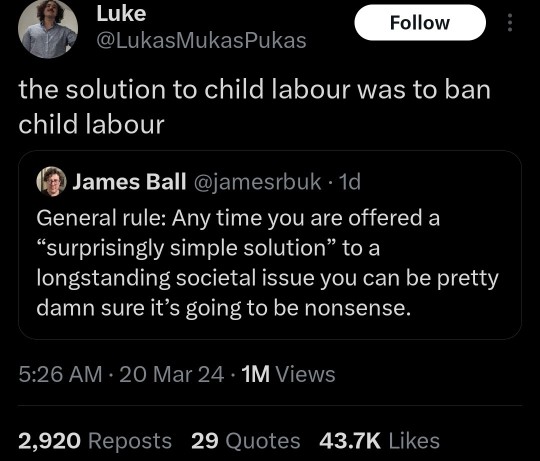#Child labor
Explore tagged Tumblr posts
Text


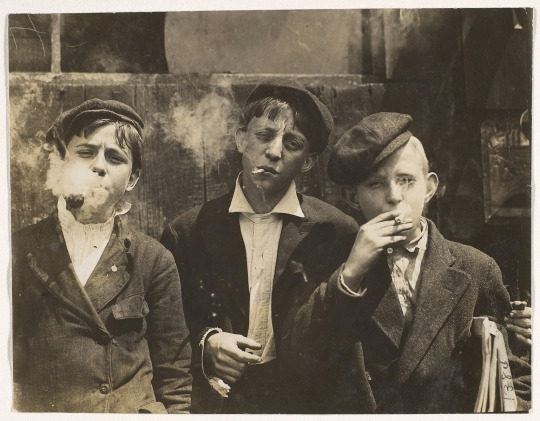

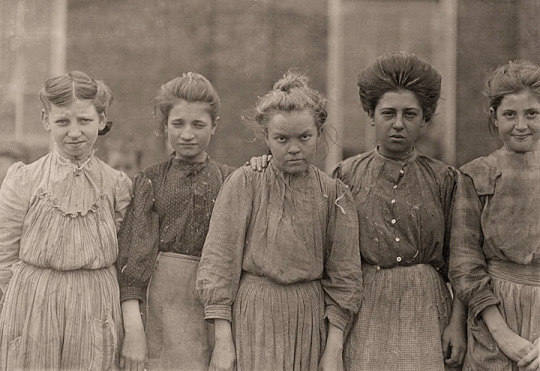
From 1908 to the early 1920s, Lewis Hine travelled across the United States photographing children working in mines, mills, and factories. His images exposed the harsh realities of child labor, driving public awareness and reform.
#reddit#snapshothistory#angelic_girls#1900s#1910s#1920s#1908#1909#lewis hine#united states#photographer#photography#b&w#mines#mills#factories#child labor#public awareness#reform#flickr#us national archives#pictures captioned#alt#let's never go backwards on this#factory#worker#workers#child workers#child labour#child labour laws
49 notes
·
View notes
Text
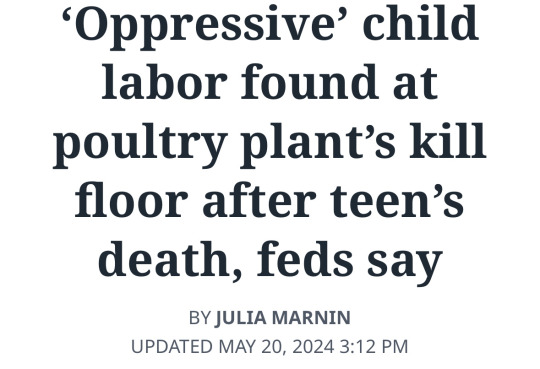
Source
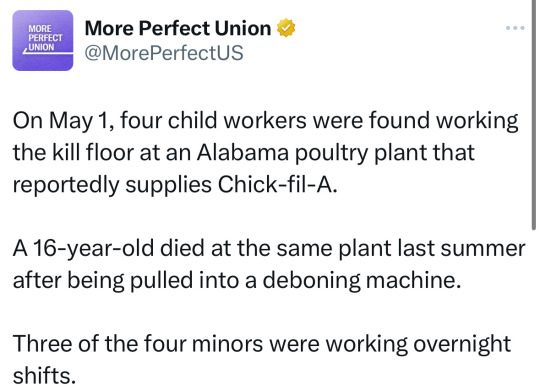
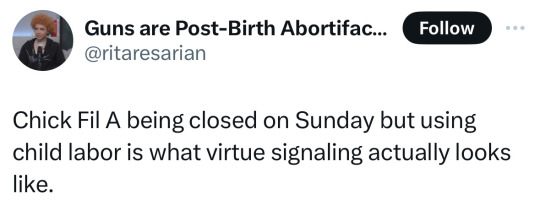
Source
#capitalism#virtue signaling#eat the rich#religion#christianity#atheism#atheist#the left#progressive#working class#labor#child labor#workers rights#twitter post
24K notes
·
View notes
Text
"When you want to take their books away, they're children. When you want them to work, they're adults."
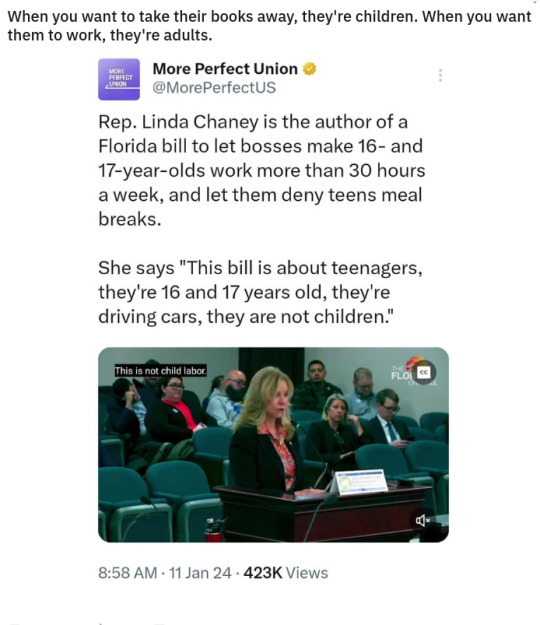
"When you want to take their books away, they're children. When you want them to work, they're adults." -/u/xFurorCelticax/ on /r/LateStageCapitalismhttps://www.reddit.com/r/LateStageCapitalism/comments/194g10g/when_you_want_to_take_their_books_away_theyre/
36K notes
·
View notes
Photo
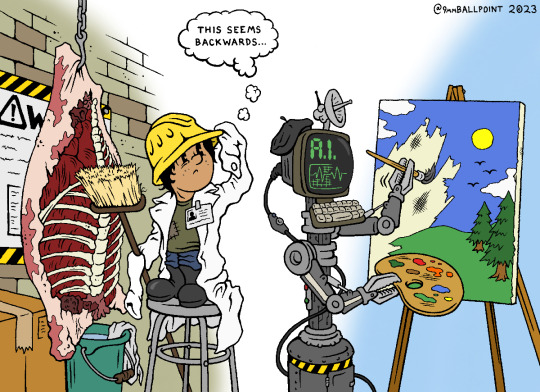
I'm not anti-technology, I just think there's something deeply sick about a society where robots make art and children work in factories.
54K notes
·
View notes
Text




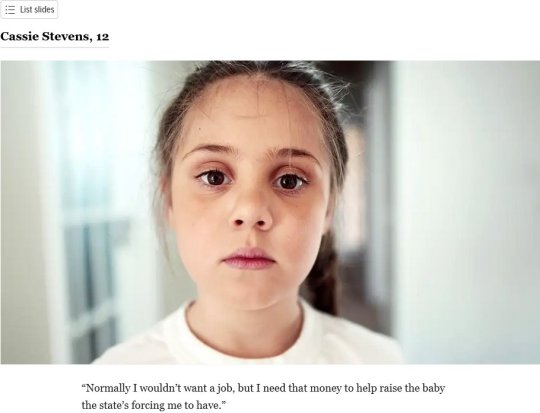


#News#politics#arkansas#gop#liberals#child labor#sarah sanders huckabee#republicans#gun control#Capitalism
41K notes
·
View notes
Text

#this is why we can't have nice things#fight the patriarchy#lies and the lying liars who tell them#smash the patriarchy#woke is wonderful#trump sycophants#trump supporters#traitor trump#fuck trump#trump indictment#trump is a threat to democracy#never trump#trump crime family#segregation#abortion rights#abortion#back alley abortions#internment camp#child labor#white supremecy#end of democracy
5K notes
·
View notes
Text
Green energy is in its heyday.
Renewable energy sources now account for 22% of the nation’s electricity, and solar has skyrocketed eight times over in the last decade. This spring in California, wind, water, and solar power energy sources exceeded expectations, accounting for an average of 61.5 percent of the state's electricity demand across 52 days.
But green energy has a lithium problem. Lithium batteries control more than 90% of the global grid battery storage market.
That’s not just cell phones, laptops, electric toothbrushes, and tools. Scooters, e-bikes, hybrids, and electric vehicles all rely on rechargeable lithium batteries to get going.
Fortunately, this past week, Natron Energy launched its first-ever commercial-scale production of sodium-ion batteries in the U.S.
“Sodium-ion batteries offer a unique alternative to lithium-ion, with higher power, faster recharge, longer lifecycle and a completely safe and stable chemistry,” said Colin Wessells — Natron Founder and Co-CEO — at the kick-off event in Michigan.
The new sodium-ion batteries charge and discharge at rates 10 times faster than lithium-ion, with an estimated lifespan of 50,000 cycles.
Wessells said that using sodium as a primary mineral alternative eliminates industry-wide issues of worker negligence, geopolitical disruption, and the “questionable environmental impacts” inextricably linked to lithium mining.
“The electrification of our economy is dependent on the development and production of new, innovative energy storage solutions,” Wessells said.
Why are sodium batteries a better alternative to lithium?
The birth and death cycle of lithium is shadowed in environmental destruction. The process of extracting lithium pollutes the water, air, and soil, and when it’s eventually discarded, the flammable batteries are prone to bursting into flames and burning out in landfills.
There’s also a human cost. Lithium-ion materials like cobalt and nickel are not only harder to source and procure, but their supply chains are also overwhelmingly attributed to hazardous working conditions and child labor law violations.
Sodium, on the other hand, is estimated to be 1,000 times more abundant in the earth’s crust than lithium.
“Unlike lithium, sodium can be produced from an abundant material: salt,” engineer Casey Crownhart wrote in the MIT Technology Review. “Because the raw ingredients are cheap and widely available, there’s potential for sodium-ion batteries to be significantly less expensive than their lithium-ion counterparts if more companies start making more of them.”
What will these batteries be used for?
Right now, Natron has its focus set on AI models and data storage centers, which consume hefty amounts of energy. In 2023, the MIT Technology Review reported that one AI model can emit more than 626,00 pounds of carbon dioxide equivalent.
“We expect our battery solutions will be used to power the explosive growth in data centers used for Artificial Intelligence,” said Wendell Brooks, co-CEO of Natron.
“With the start of commercial-scale production here in Michigan, we are well-positioned to capitalize on the growing demand for efficient, safe, and reliable battery energy storage.”
The fast-charging energy alternative also has limitless potential on a consumer level, and Natron is eying telecommunications and EV fast-charging once it begins servicing AI data storage centers in June.
On a larger scale, sodium-ion batteries could radically change the manufacturing and production sectors — from housing energy to lower electricity costs in warehouses, to charging backup stations and powering electric vehicles, trucks, forklifts, and so on.
“I founded Natron because we saw climate change as the defining problem of our time,” Wessells said. “We believe batteries have a role to play.”
-via GoodGoodGood, May 3, 2024
--
Note: I wanted to make sure this was legit (scientifically and in general), and I'm happy to report that it really is! x, x, x, x
#batteries#lithium#lithium ion batteries#lithium battery#sodium#clean energy#energy storage#electrochemistry#lithium mining#pollution#human rights#displacement#forced labor#child labor#mining#good news#hope
3K notes
·
View notes
Text
#kamala harris#jasmine sherman#tim walz#lakota people#lakota project#protect women#protect nature#protect wildlife#important#important post#us politics#decolonization#decolonialism#decolonize your mind#decoloniality#decolonize#child safety#child slavery#greenwashing#child labor#child labour laws#anti nestle#vote for jasmine Sherman#tanda blubear
1K notes
·
View notes
Text

Garment workers. Katrina De Cato, 6 years old, Franco Brezoo, 11 years old, Maria Attreo, 12 years old, Mattie Attreo, 5 years old. 4 P.M. New York City.
Record Group 102: Records of the Children's BureauSeries: National Child Labor Committee Photographs taken by Lewis Hine
This black and white photograph shows four girls in early 20th-century dresses sewing clothes. They are sitting on chairs and a large trunk around a table.
178 notes
·
View notes
Text
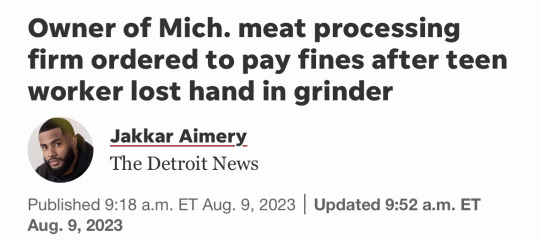
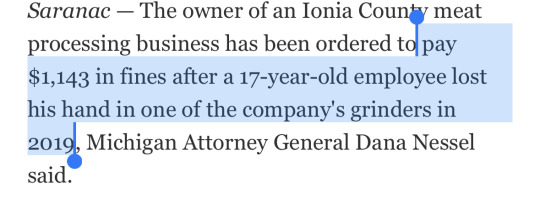
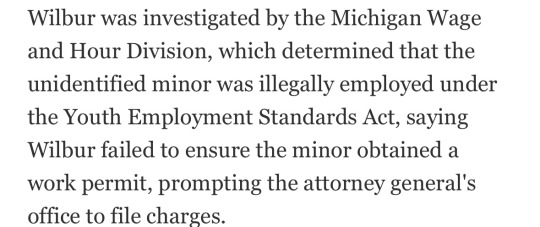
Source
The penalty for this grisly child labor crime: a $1,143 fine.
#working class#workers rights#child labor#capitalism#eat the right#current events#unions#unionize#news#labor
16K notes
·
View notes
Text
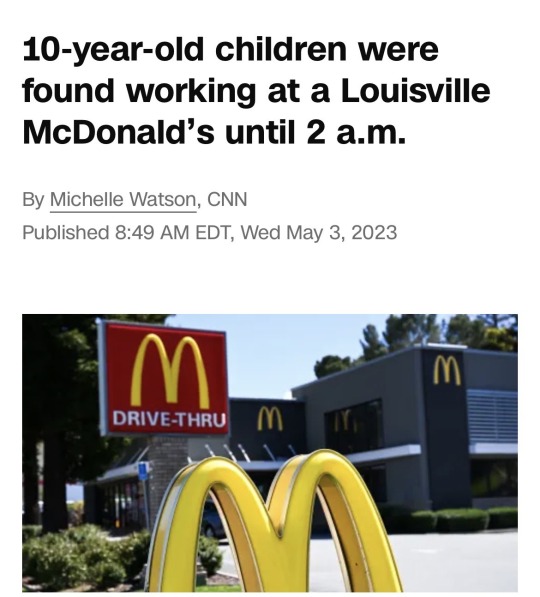
More than 300 children, including two 10-year-olds, were found working at McDonald's restaurants across Kentucky and several other states in violation of federal labor laws, the Labor Department said Tuesday.
In one case, investigators found two 10-year-olds were working unpaid and until as late as 2 a.m. at one McDonald's restaurant in Louisville operated by Bauer Food LLC, which is based in Louisville, the department said in a news release.
The two children prepared and distributed food orders, cleaned the store, worked at the drive-thru window and operated a register, investigators found. One of them was also allowed to operate a deep fryer, a task prohibited for workers under the age of 16 under federal law.
Most of the restaurants, 45 of the 62, were in Kentucky, according to data released by the department.
The revelation was part of an investigation into the child labor law violations in the Southeast. The agency also found three franchisees that own more than 60 McDonald's locations in Kentucky, Indiana, Maryland and Ohio, "employed 305 children to work more than the legally permitted hours and perform tasks prohibited by law for young workers" the Labor Department said in a statement.
The franchisees, Bauer Food, Archways Richwood and Bell Restaurant Group, did not immediately respond to a request for comment. CNN has also reached out to McDonald's for comment.
(source) (source)
2K notes
·
View notes
Text


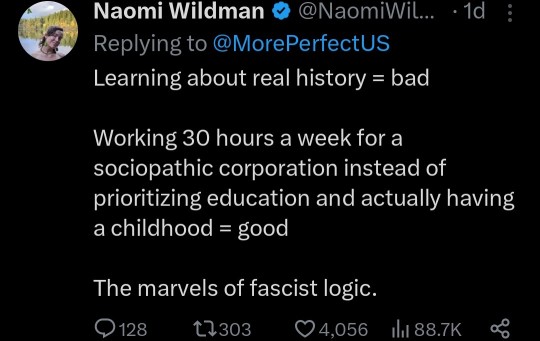

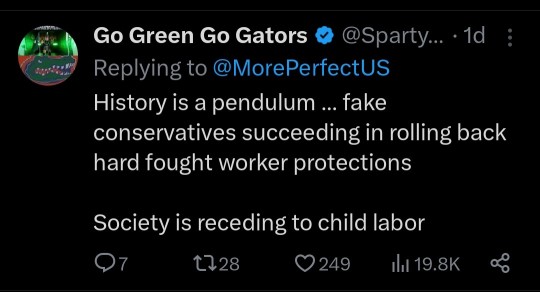
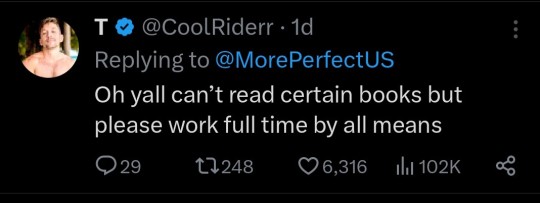
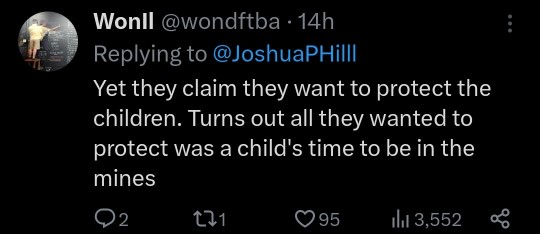


7K notes
·
View notes
Text
Life under Republican rule.
☹️
#child labor#republican assholes#corporate greed#republican hypocrisy#late stage capitalism#corporate oligarchs#crooked donald#maga morons
109 notes
·
View notes
Text
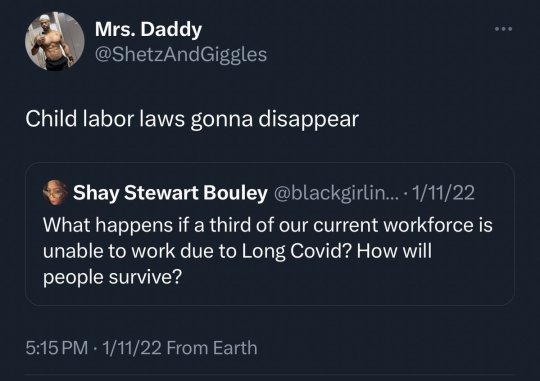
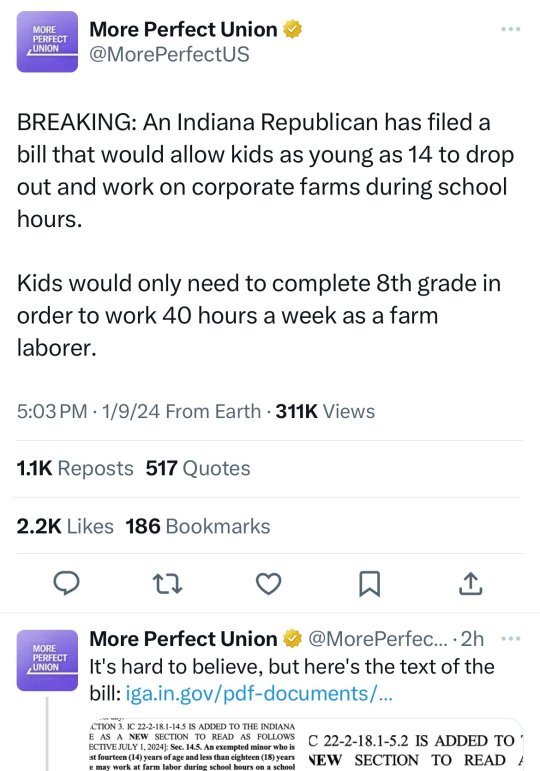
#indiana#democrats#republicans#child labor#farms#politics#long covid#covid#news#uss#twitter#red states
7K notes
·
View notes
Text
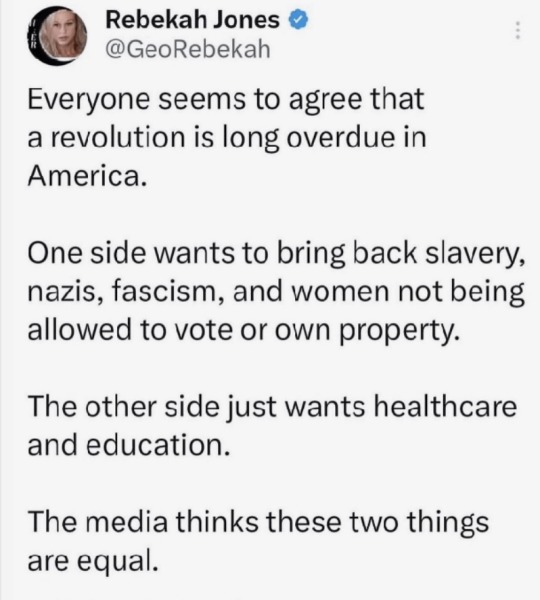
#this is why we can't have nice things#lies and the lying liars who tell them#democrats#republicans#american horror story#american revolution#health care#tax dollars#slavery#child labor#priorities#media literacy#media#media analysis#media bias#what radicalized you?#radical ideas
2K notes
·
View notes
